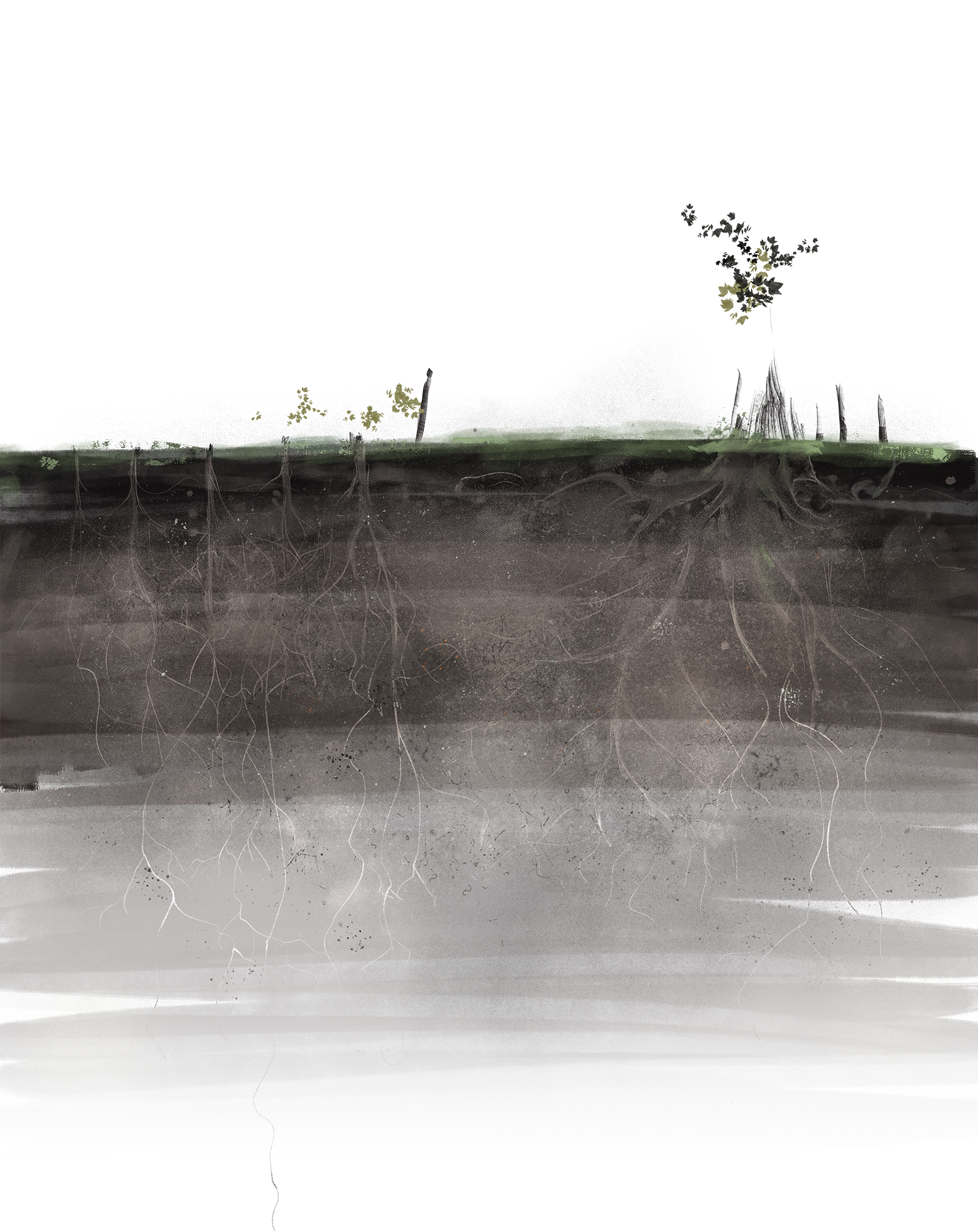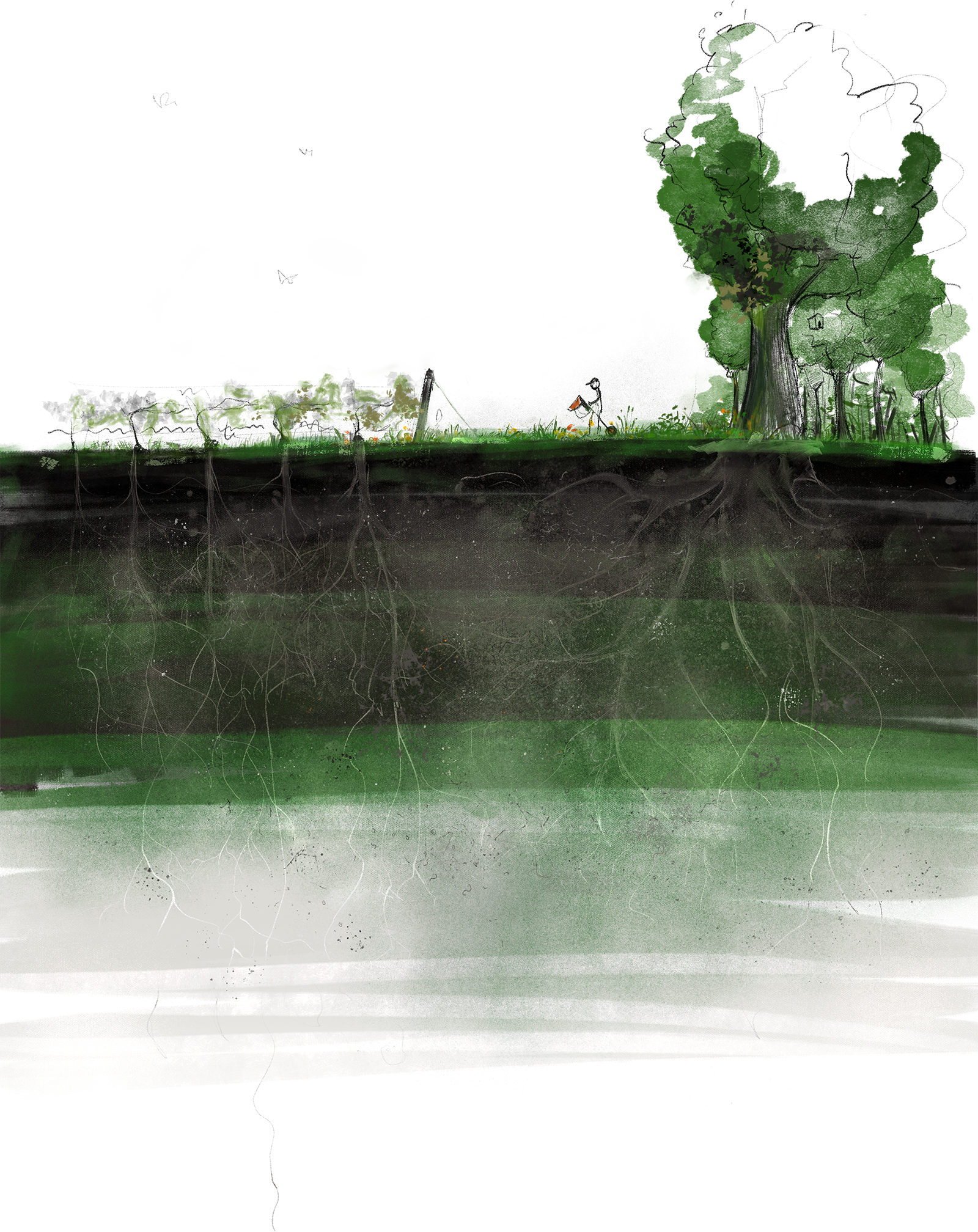OUR VINEYARD
Understanding and enhancing our terroir’s character
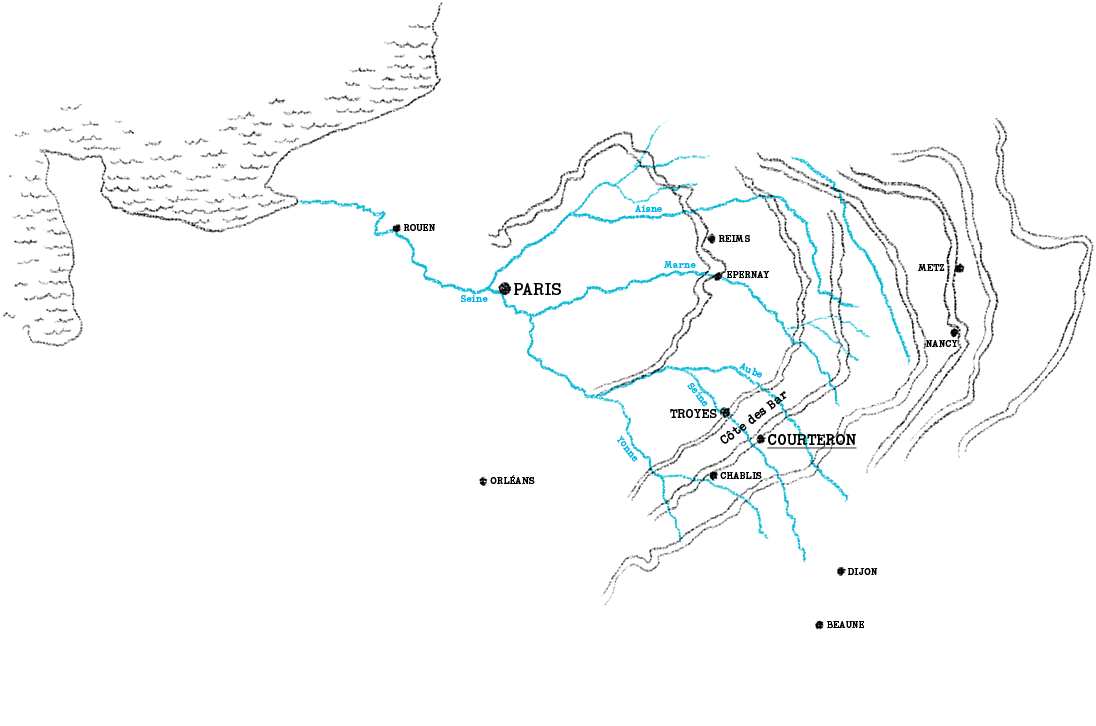
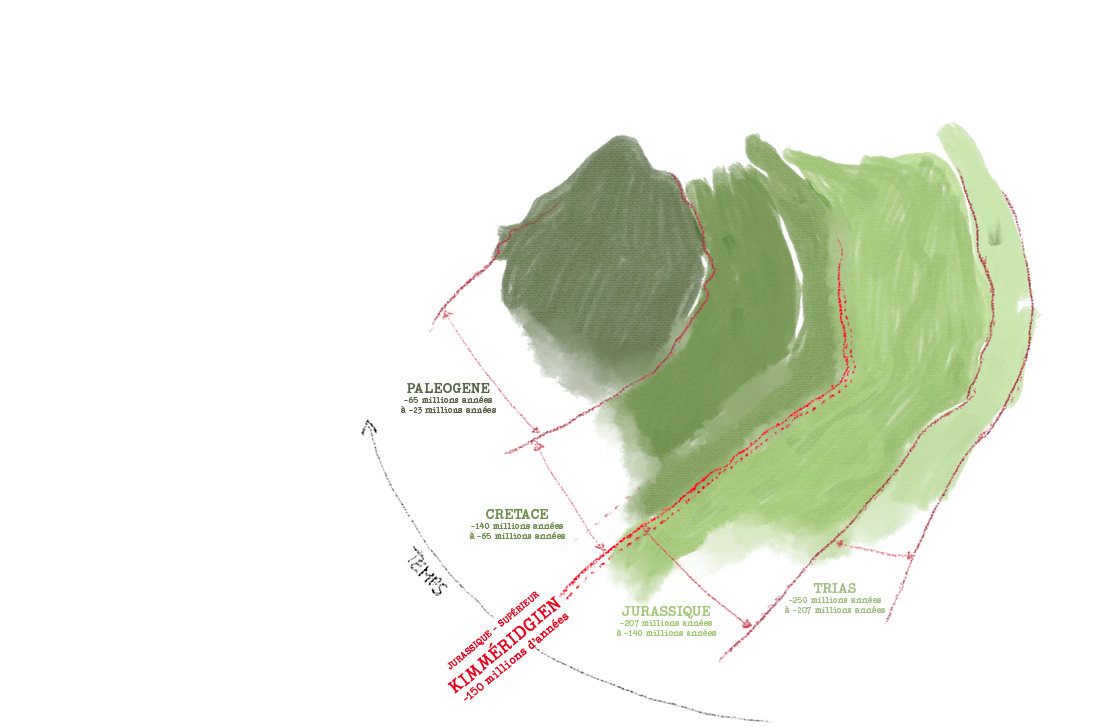
The Estate was founded in 1895 in Courteron, a village located in the southern Champagne region in the Aube department, within the Côte des Bar. It is here where the first tributaries of the Seine meet, shaping the slopes of the valleys where our vines now grow (facing south/south-West).
The total of 15 hectares are composed of 85% Pinot Noir and 10% Chardonnay; the remainder is split between Pinot Blanc (a historical variety in Champagne), Pinot Gris (replanted in 2010) and Pinot Meunier. Our oldest vines were planted in 1970, and every year new ones are replanted to preserve the quality and vitality of our vineyard.
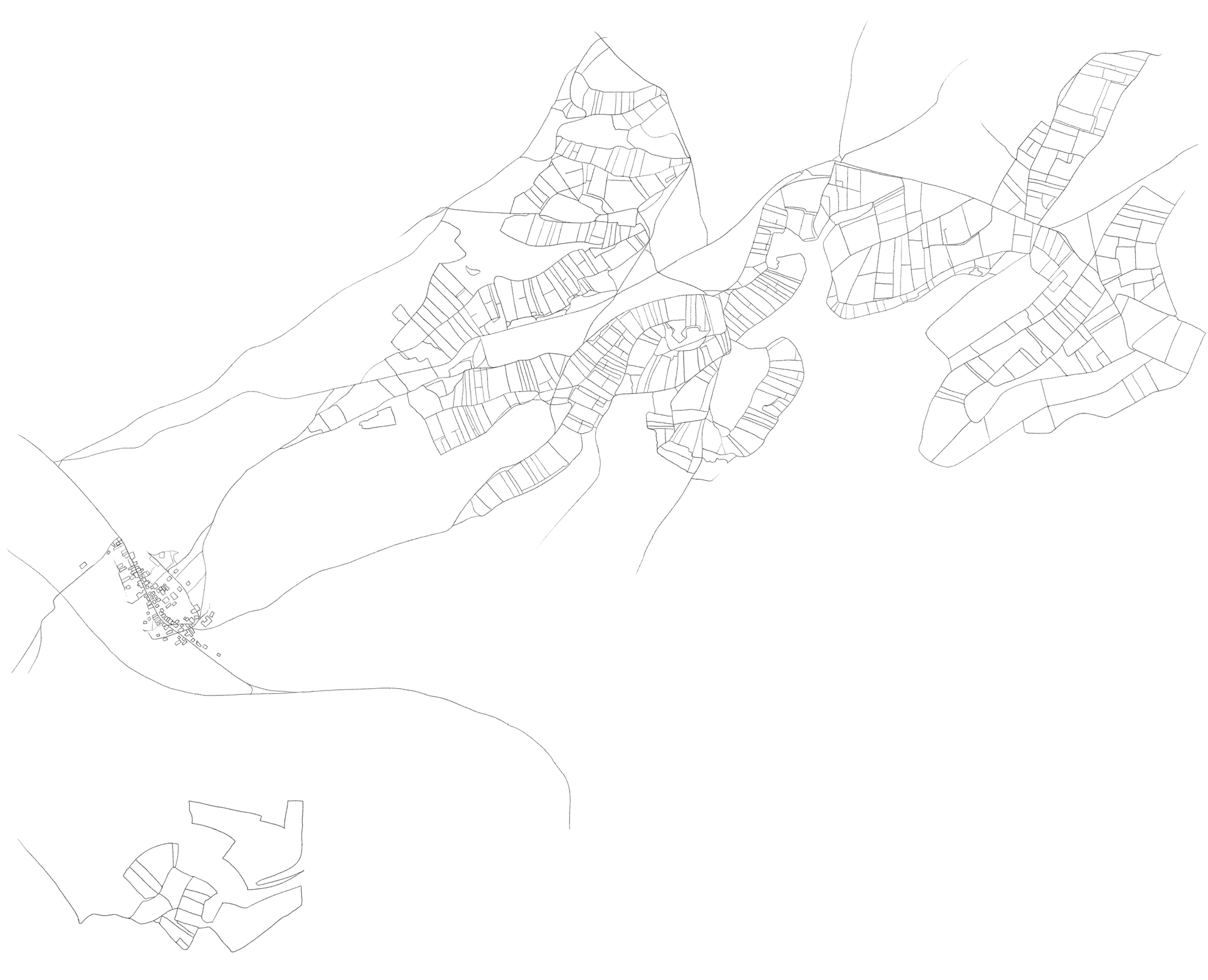
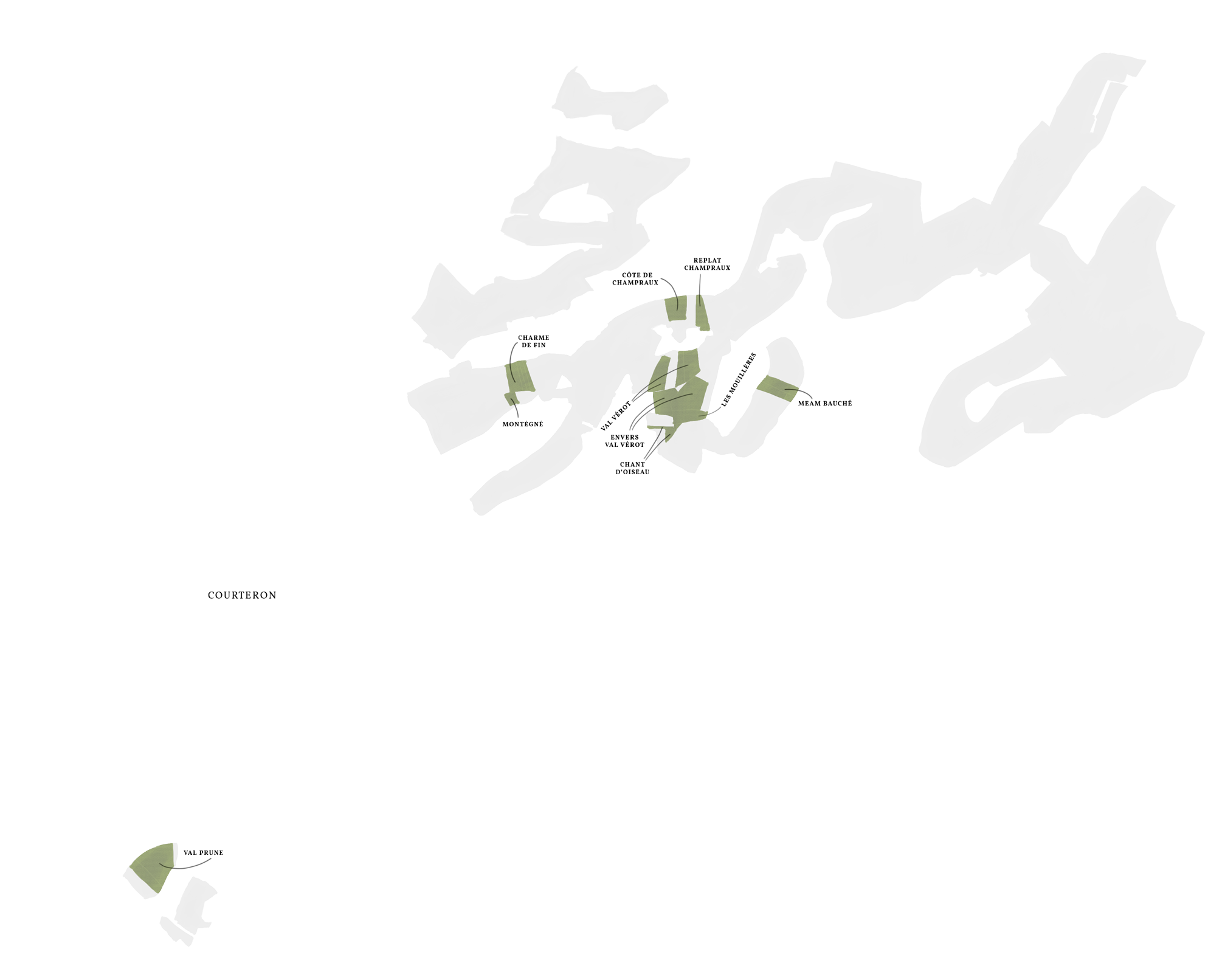
Our parcels often have very unusual names(5), originating from a tradition of local micro-toponymy that named lands according to their orientation, depth or even attractiveness to birds!
- 5 - Special names Val Prune,
Chant d’oiseau,
Val Vérot,
Charme de Fin,
Replat Champraux
...
"For the vine, the subsoil is much
more important than the soil itself”.
Our terroir situated in the most southernly part of Champagne, benefits from a very particular geology, formed in the Kimmeridgian at the time of the Upper Jurassic. The subsoils are essentially made up of marly limestone or clay-limestone with naturally draining slopes, excellent for growing vines.
For the vine, the subsoil is much more important than the soil itself, as it has a direct influence on the wines. A cross-section of the terroir, visible in the reception hall of our domain, highlights the role of the roots: thanks to more than 30 years of biodynamic soil cultivation, they penetrate the different geological strata to a depth of several meters into the bedrock. They draw their nourishment from living micro-organisms, found in soil analyses carried out by the L.A.M.S laboratory of the agricultural engineers Claude and Lydia Bourguignon (https://lams-21.com/).
MNHN J03330 - Holotupe
" Aulacostephanus pusillus "
ZIEGLER, 1962
(Fossil specimen found in the Aube department, Kimmeridgian)

10 mm
The vineyard of Champagne is the most northern of the French vineyards. This geographical position brings with it a particular climate. Our estate, close to the Langres plateau, traditionally had a semi-continental climate with cold winters, hot summers and moderate rainfall. In recent years we have observed the effects of climate change, most significantly the ever increasing early harvest.
Taking into consideration all of these geological, climatic and even historical elements enriches our understanding of the rhythms of nature, allowing us to best represent our terroir.
Work in the vines
Respecting natural harmony
Our Domain represents a living organism that we have been cultivating in line with its habitat for the last 30 years, by acknowledging nature's rhythms and its influence from terrestrial and cosmic forces. At first, this agriculture method might seem both demanding and esoteric. However it is truly a virtuous circle: it follows our vision of winemaking as a support of nature's creation, and also contributes to the quality of our vines and champagnes, labeled as Organic AgricultureTM and Biodynamic.
“We must take acknowledge nature’s rhythms,
influenced by both terrestrial
and cosmic forces”
Our viticulture work is focused on both the soil and the plant. The cultivation of the soil is achieved by ploughing in addition to the application of biodynamic preparations.
Vine work is synchronized with lunar and planetary rhythms, according to their effects on root, leaf, flower or fruit development. For example, vine suckering, debudding or de-leafing are preferably done during the "leaf" days of the lunar calendar. The grafts and harvest are done in consideration with the lunar spring when the moon is rising, a time that favors high sap flow. The lunar fall, when the moon is descending, is a good time for vine pruning.


A vineyard is a monoculture, which is why we are committed to developing its biodiversity. Weeding the soil mechanically, essentially scrapes the surface to allow water, heat and light to penetrate. We are developing the idea to cover our vines with permanent vegetation that will naturally protect and fertilise our soils. For example, nitrogen-fixing legumes replenish the soil with nitrogen and support mycorrhiza, a symbiosis between a fungus and a plant’s roots. This vegetation also provides an additional habitat for microbial and insect populations, which further enrich the soils.
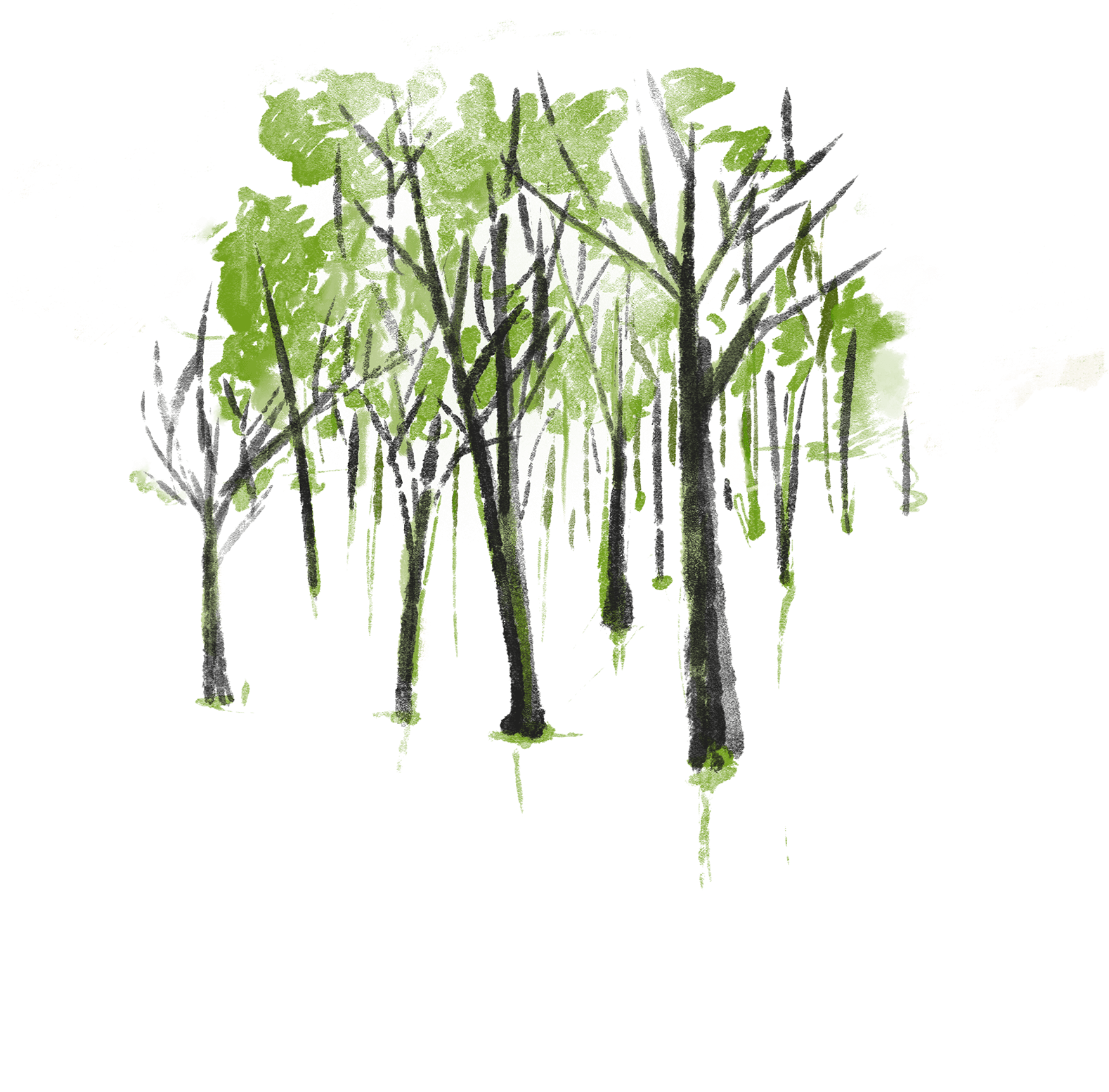
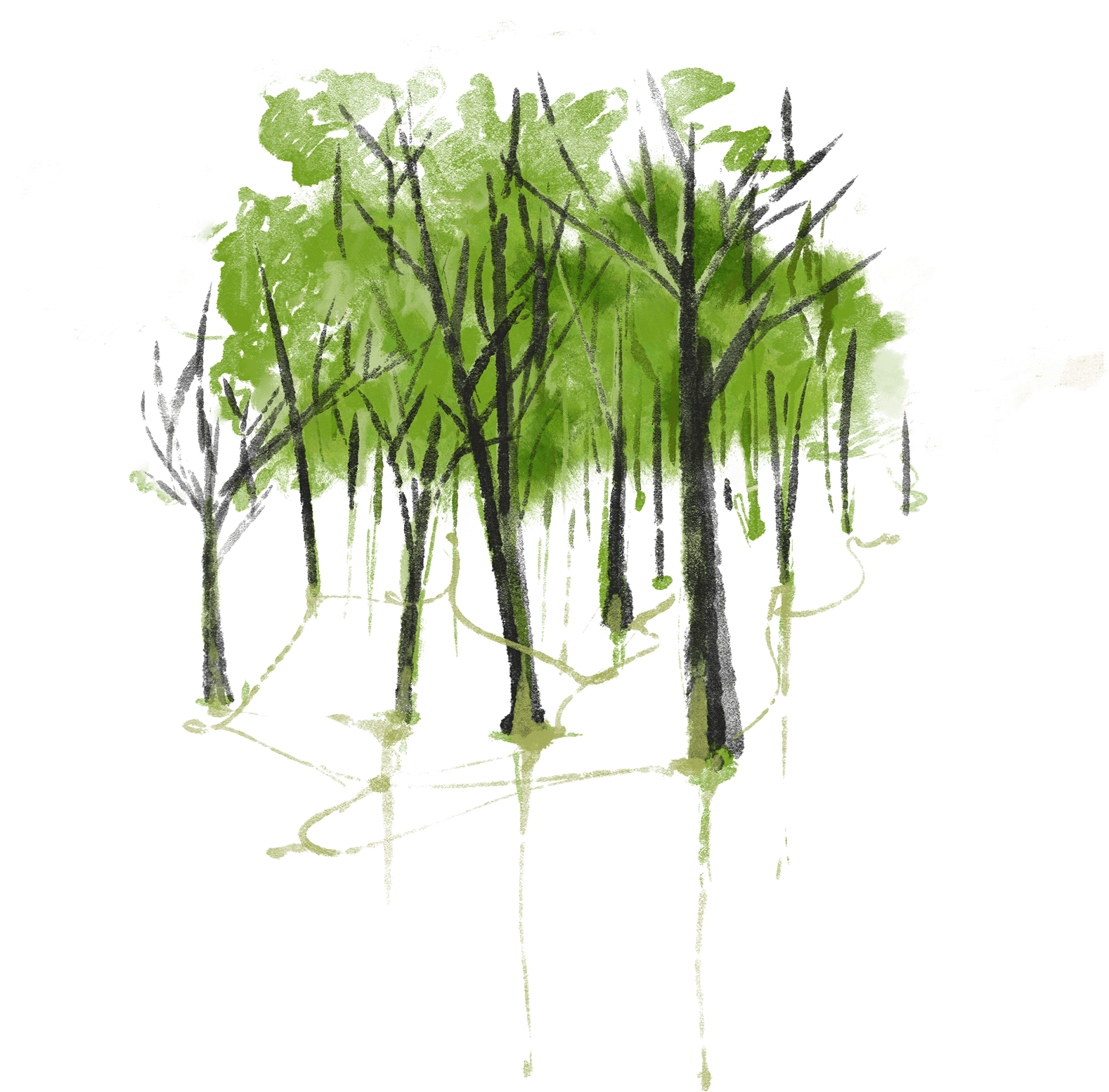
“Draw inspiration from the symbiotic spirit of the forest,
developing root integration
between different plants.”
We are also interested in agroforestry. As part of a dedicated group aimed at reducing the impact of single crop farming, which is degrading our soils. The objective is to introduce trees and shrubs back onto our plots to recreate the symbiotic spirit of a forest, increasing the root interactions with different plants(6). We are also planning to improve biodiversity by planting redcurrant and blackcurrant bushes.
- 6 - The root interactions between plants
99% of a tree’s composition comes from elements in the air. Because their roots are so strong, trees can alter the bedrock to draw minerals that our crop cannot access. Trees can also generate a new soil. They are a source of life and attract life around them.
Roots and Life Underground
Life in action underground
Our soils are an incredible source of life. It truly is a living system that can host up to 1 billion living organisms in only one gram of soil. The microcosm, a reflection of macrocosmic events, forms an interdependent ecosystem that is composed of bacteria, fungi and insects (such as worms). It is in this “diaphragm” where roots can grow and anchor the plant. The roots nourish the vines with minerals and nutriments that have accumulated for millennia, and by doing so transmit the terroir’s unique personality.

